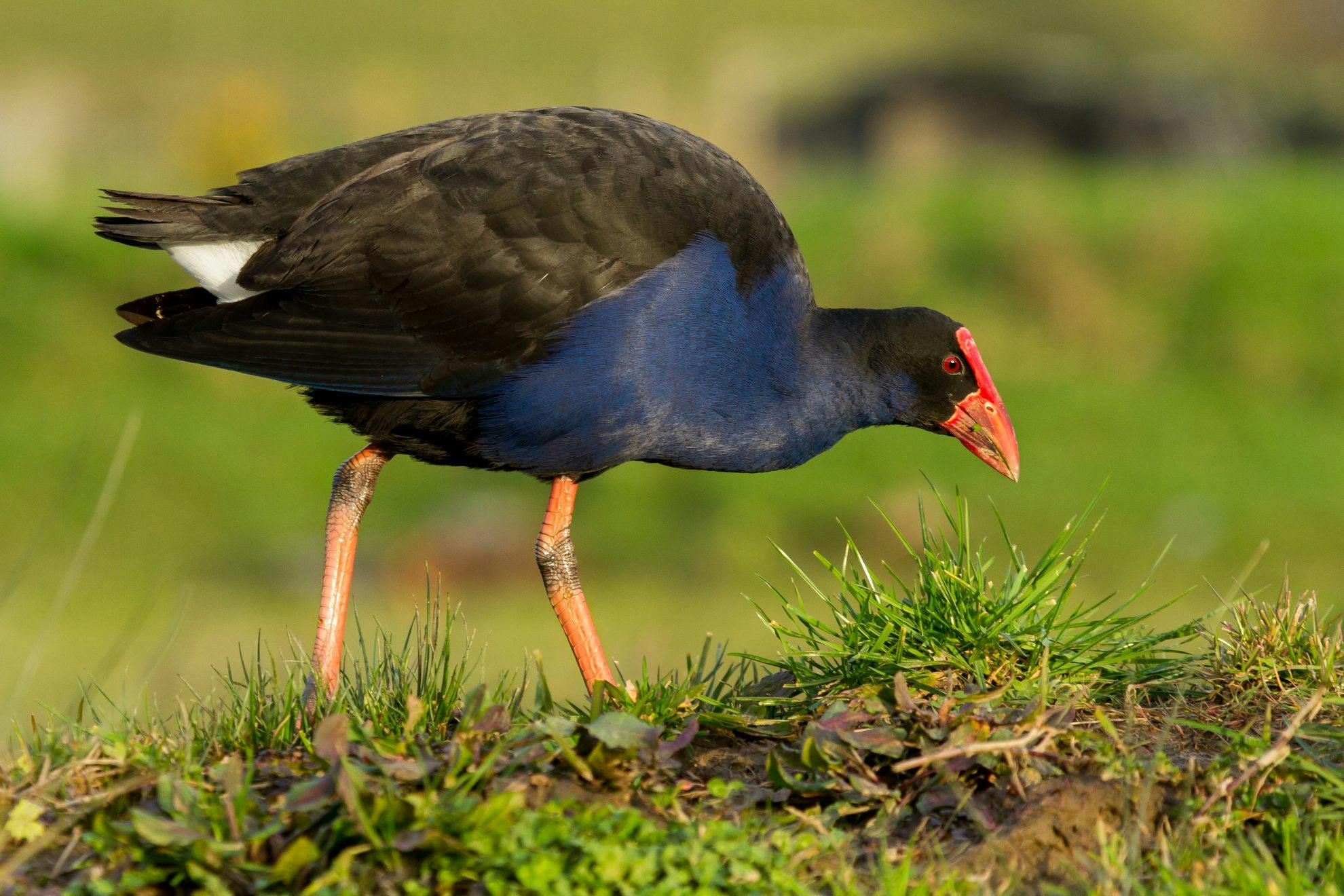The pukeko is a native (self-introduced) species that has become almost as ‘Kiwi’ as a kiwi. A well-recognised and relatively common bird, it is a colourful character but does have an aggressive and quite nasty streak.
Conservation status: Native species classified as ‘not threatened’.
Diet: The most common food sources are shoots, leaves, stems and seeds of a variety of grasses, though it also eats other animals – it is not uncommon for pukekos to catch and eat ducklings.
Features: The pukeko is a bird of the ‘rail’ family. It is similar in appearance to the takahe, but slightly smaller and more lightly framed. The throat, head and breast on a pukeko are a deep violet/blue, while the back and wings are black. In contrast, the undertail feathers are white and the bill and frontal shield are bright red. Its long legs and large toes are orange. The younger birds’ frontal shield turns red after about three months.
Call: Pukekos have a wide range of vocal sounds. Territorial ‘crowing’ is the loudest, but other calls include sounds like ‘hiccup’ and ‘squawk’ which are generally used as contact calls.
Nesting: Breeding takes place in any month but peaks from August to November. A female pukeko will lay four to six eggs but often several females will contribute to the one nest, so a clutch size can be up to 18 eggs. Male birds carry out the majority of the incubation but both parents (as well as other family members) will care for the young. Incubation is around 24 days and chicks leave the nest at four or five days.
Bird spotting tip: Swampy and wet areas alongside pasture or grassy areas are favoured habitats of the pukeko. Lagoons, estuaries, lakes, roadside ditches and drains are common places to see them. Although a fairly cautious and suspicious bird, pukekos can become used to regular human activity. If spooked, they will take flight into dense cover such as reeds and tall grasses, but if you’re patient they will eventually reappear and continue on in a relaxed manner.
Feathery fact: Pukekos are categorised as a game bird and can be hunted during the game bird hunting season for up to four months each year.








